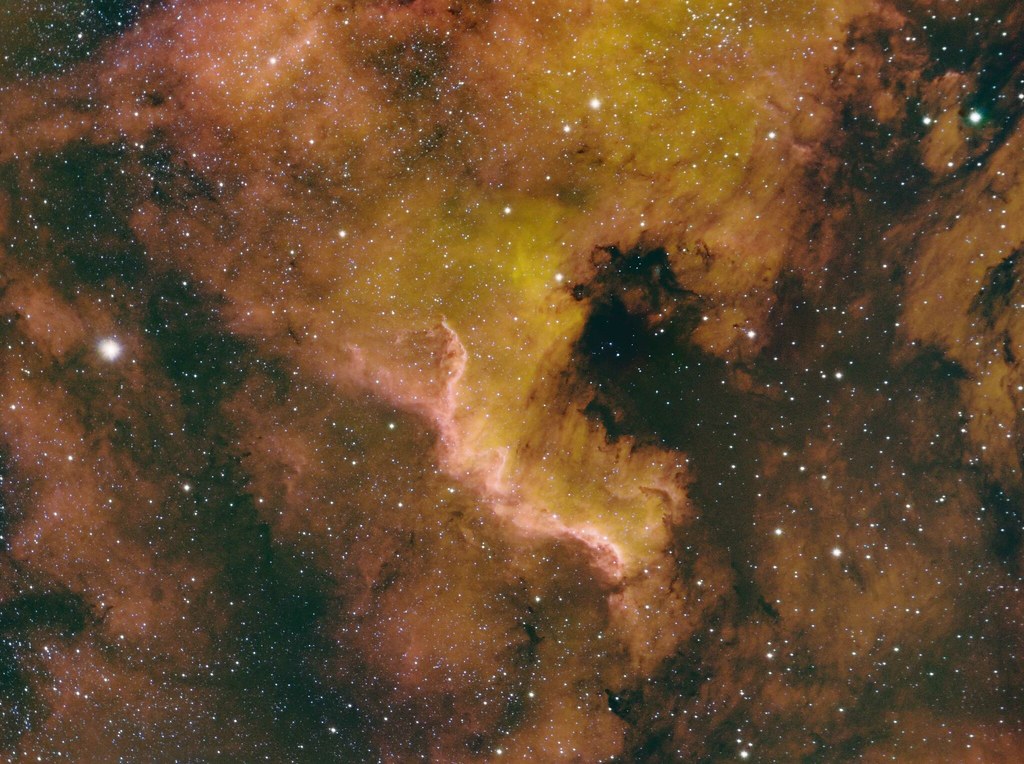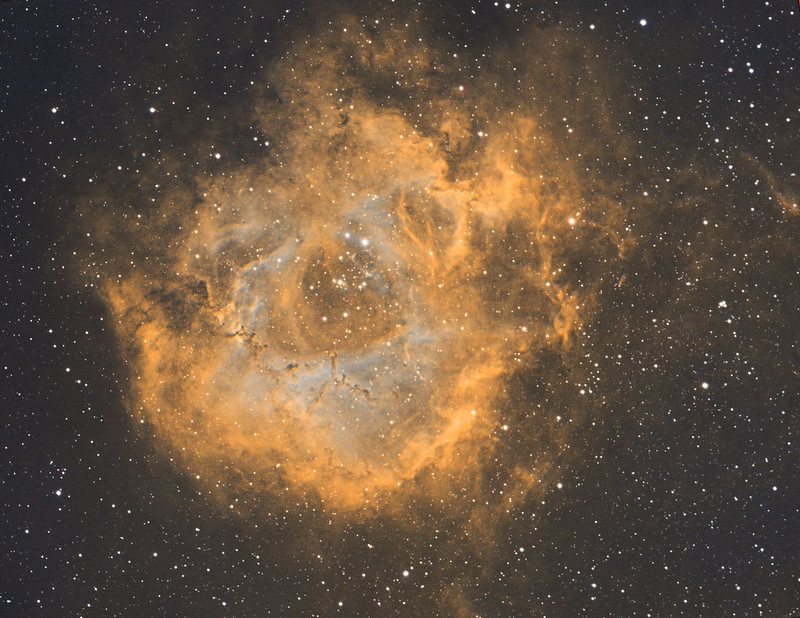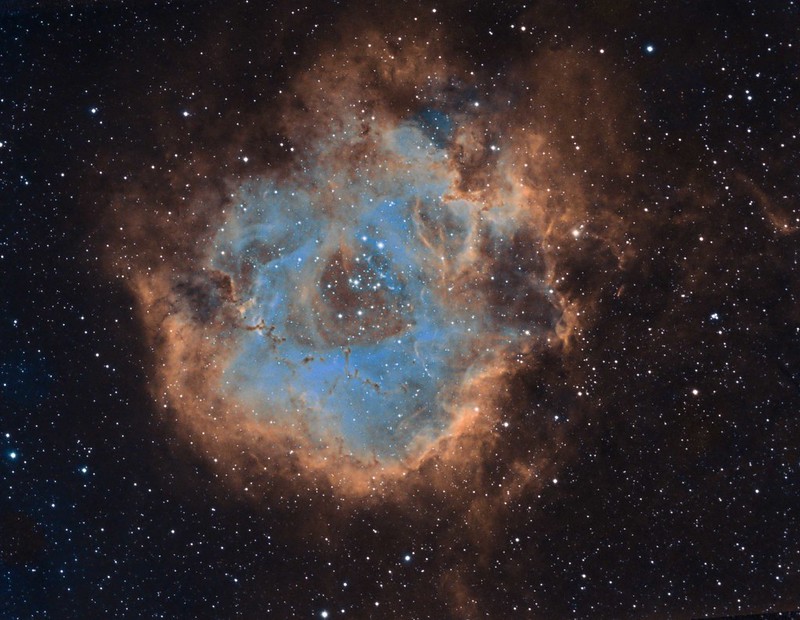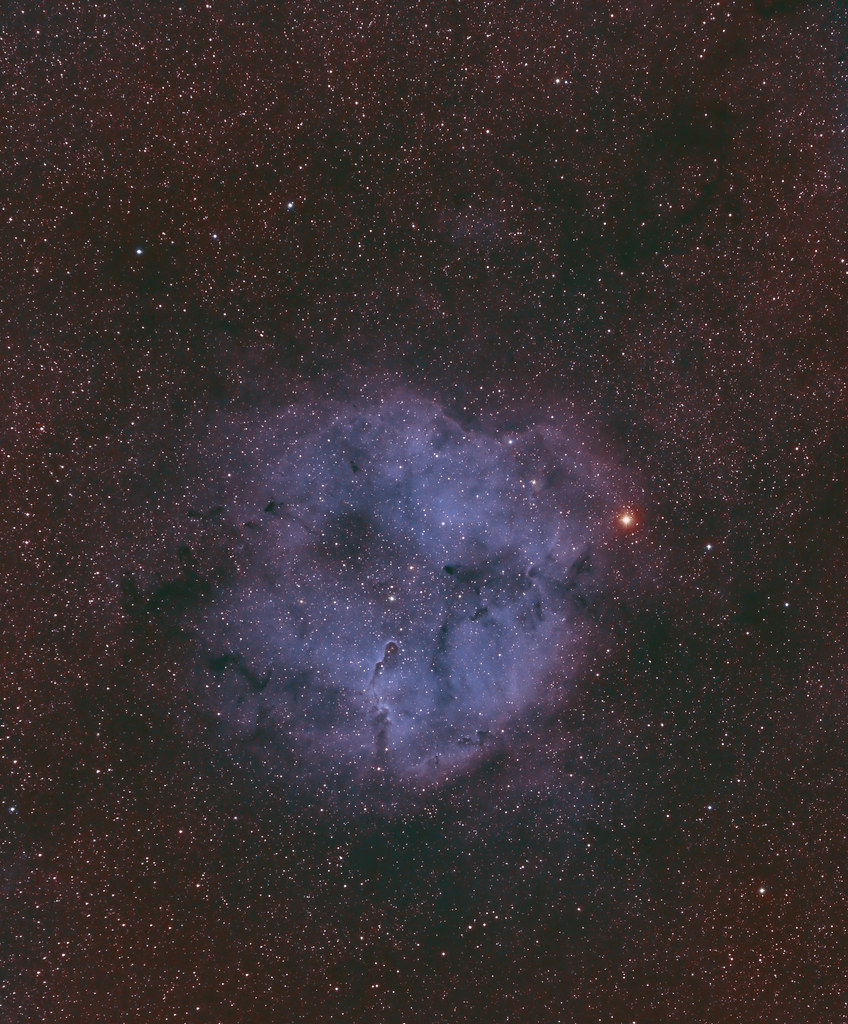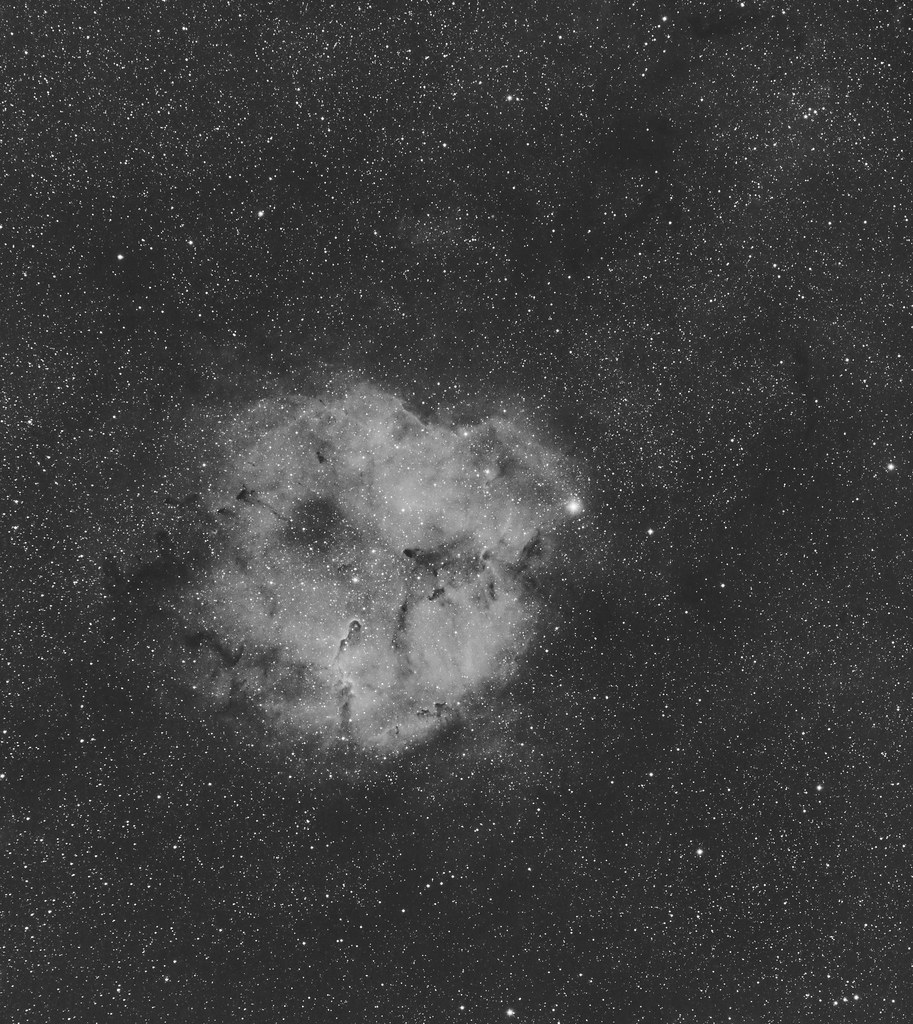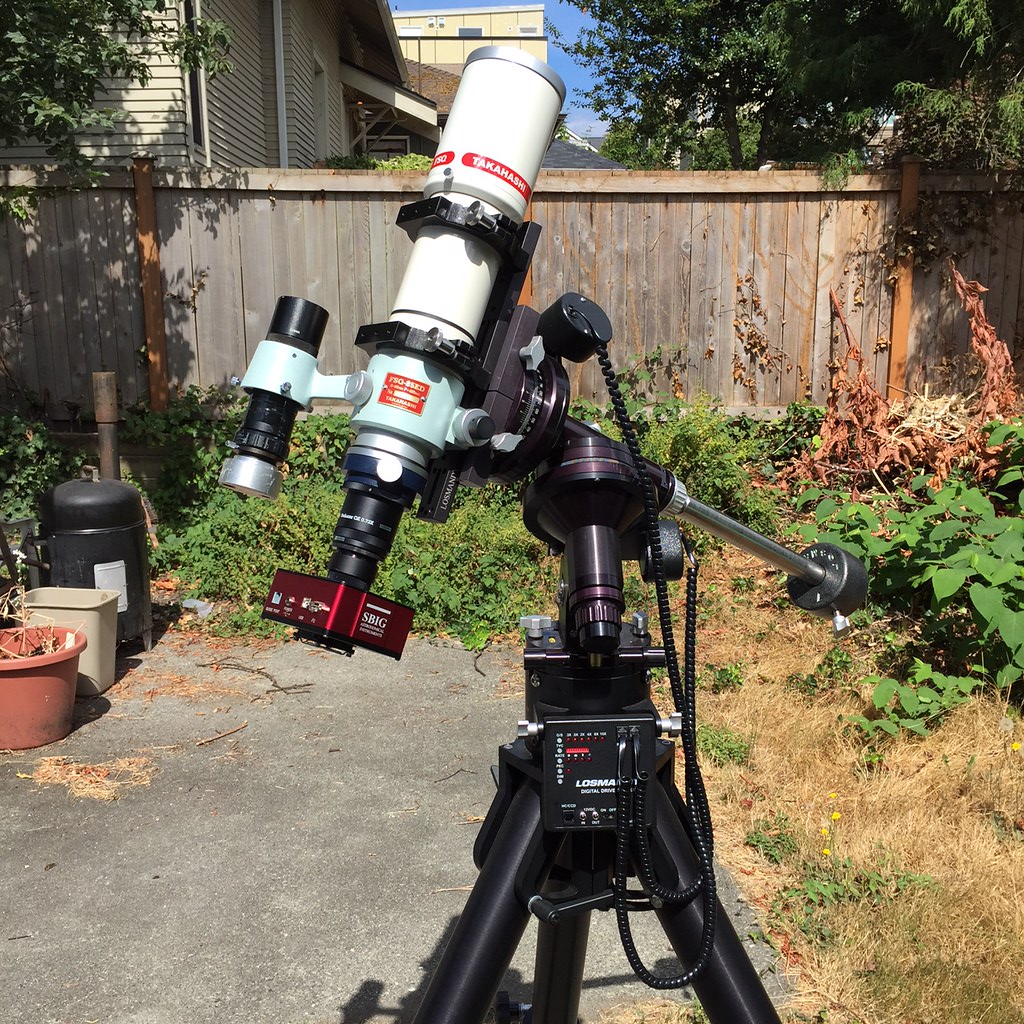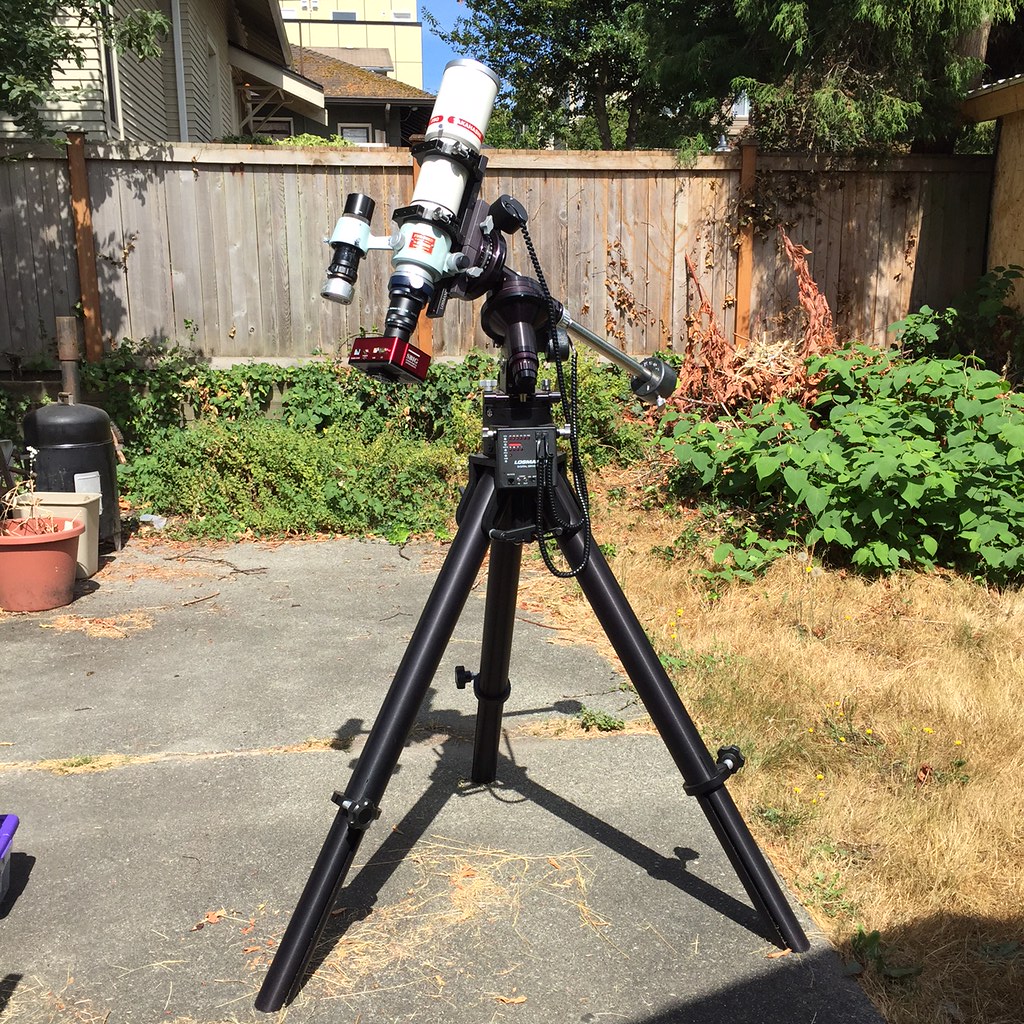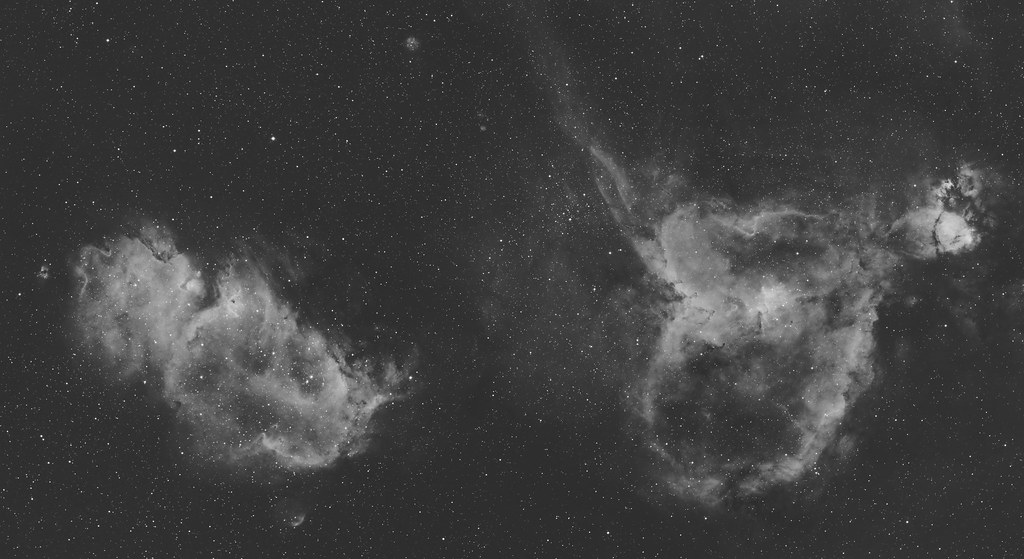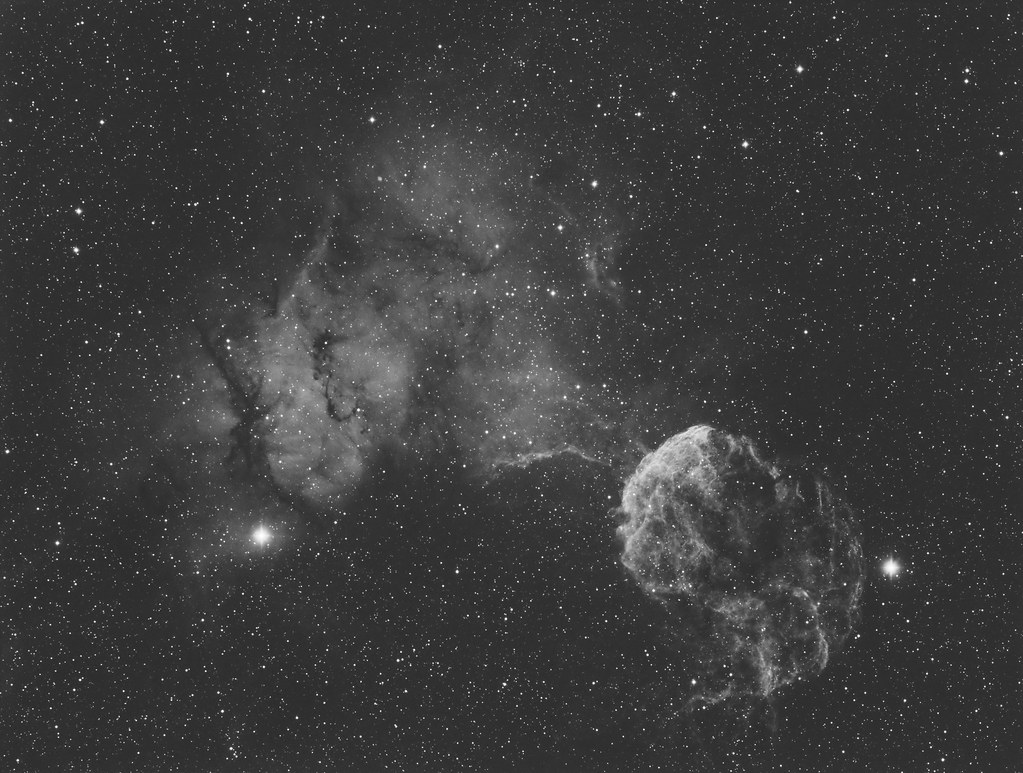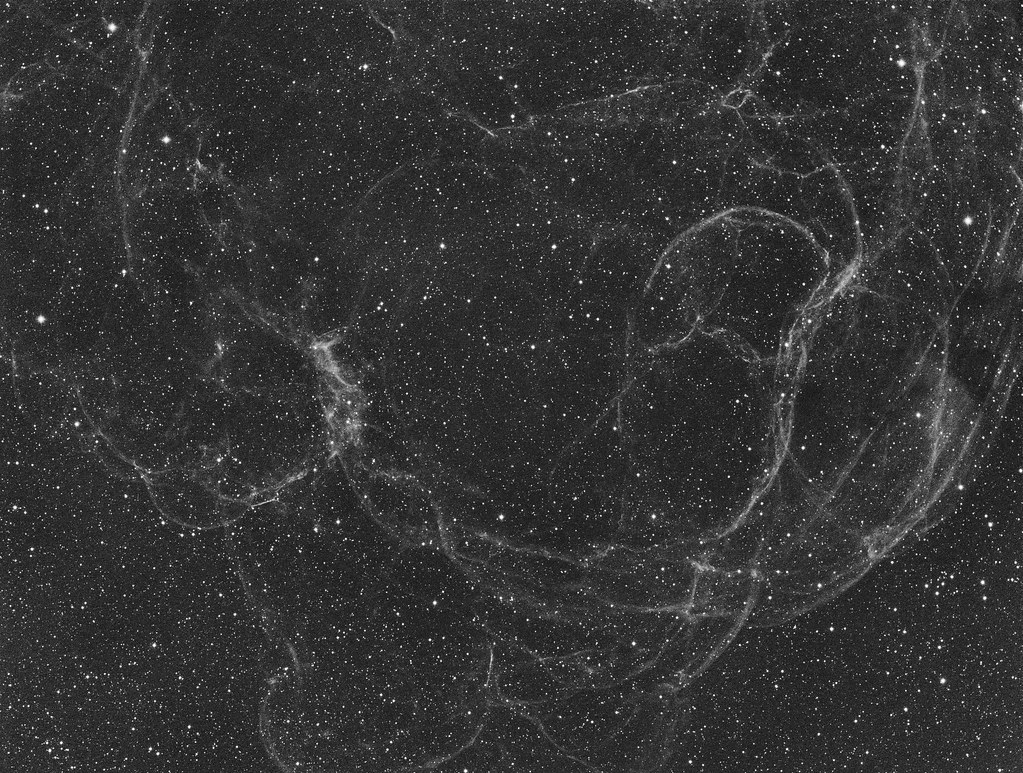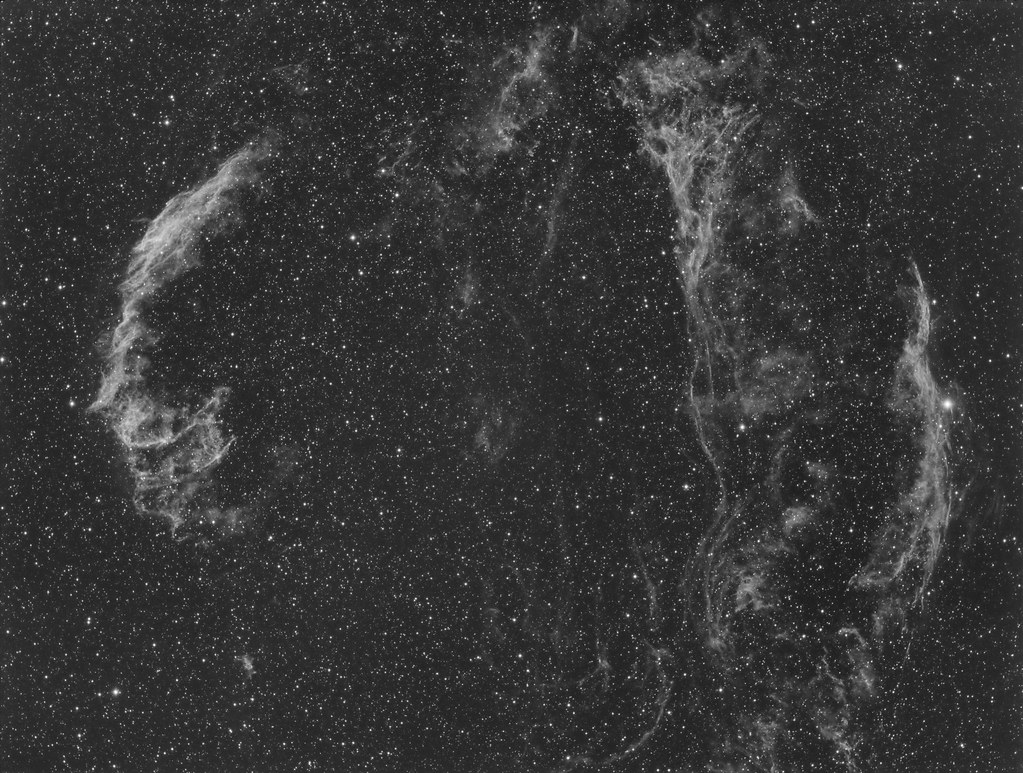Halpha in the Balmer series (most abundant optically available material in the Universe) is optically red but you would have to be closer or have stronger eyes to see it (more cones and rods that absorb in that particular wavelength band). If you take a regular dslr and take a short exposure (ISO 1600 for 30 seconds or even 25000 ISO for five seconds) you will see red in the image (as well as other colors). Orion Nebula is a perfect example of this that anyone can manage with a regular dslr and say a 200 mm lens..no filter needed. The narrow band filters are mostly used to block out light pollution (I live in the city) and enhance contrast. One uses monochrome cameras with specific filters because the bayer filter in a DSLR distributes photons according to the bayer matrix of red, blue and green, how we see I guess. ( I am not an expert on our eyes or the bayer matrix so I am only giving the pop science explanation, I still find it a little confusing)..so in effect, you lose 66% of the information that the camera sensor receives as a function of time. In other words, you would have to image three times as long for a DSLR versus a mono CCD and you could only do this effectively in areas with much less light pollution. Mono CCD's also have the ability to cool down the sensor electronics to avoid heat buildup which causes read noise (noise in the image decreases the amount of data that is available for porcessing. There are lots of kinds of noise though due to heat, quantum efficiency, bias (light pollution), and others I forget, which can be processed out of the image ..but the cleaner the image to begin with, the better. You dont want pixels due to noise competing with pixels due to the object you are imaging. Same goes for Oiii (greenish) and Sii (blueish). When imaging galaxies or non emission nebula (plain ole dust that only reflects star light), we use LRGB filters (luminance, ,red blue and green)..which is essentially like using a DSLR, but because each filter is used one at a time, you get 100 % of the information of those photons ( as a measure of flux ) versus a DSLR's Bayer matrix (in which you get only one third for each color). Galaxies and non emission nebula are balanced in the full optical spectrum (as you are dealing with star light). (BTW, Flux is a measurement of the light that is measured from the point of reference of the observer...if you know how far the the object is , you can easily measure the actual Luminosity (and the rate of actual light transmission from the object as function of time (Power: Wattage essentially)..just like a lightbulb))

